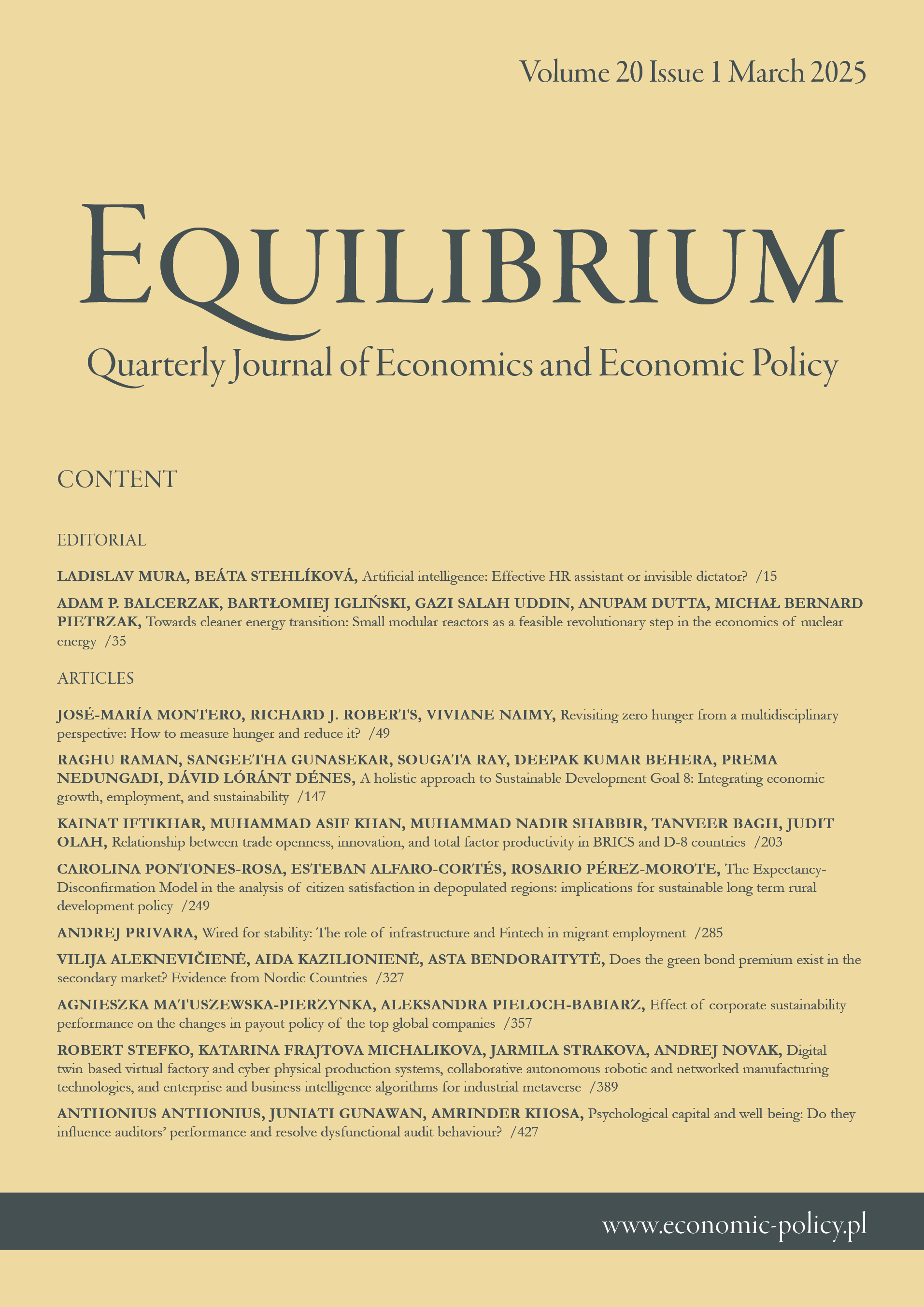Does the green bond premium exist in the secondary market?
Evidence from Nordic countries
Does the green bond premium exist in the secondary market?
Evidence from Nordic countries
Author(s): Vilija Aleknevičienė, Aida Kazilionienė, Asta BendoraitytėSubject(s): National Economy, Business Economy / Management, Green Transformation
Published by: Instytut Badań Gospodarczych
Keywords: green bond premium; yield spread; liquidity spread; secondary market;
Summary/Abstract: Research background: The green bond market is growing every year. This market becomes aneffective financing mechanism for climate change mitigation and adaptation. Even thoughapproximately two-thirds of the research confirmed the existence of a green bond premium(GBP) in the secondary market, certain circumstances may deny it. Among them are compara-ble credit quality, market demand and supply dynamics, market liquidity, regulatory andpolicy support, investment preferences, etc. These circumstances are the main motivation forcontinuing the studies related to GBP, testing its existence for the issuers in Nordic countries.These countries have rather ambitious policies for environmental protection and low-carbonThese countries have rather ambitious policies for environmental protection and low-carbondevelopment, the presence of a transformative Nordic model for greening the economy, andissuers overall are positive towards the EU Green Bond Standard.Purpose of the article: This study aims to determine the GBP in the secondary market.Methods: A matching method is used to determine the pairs of green and conventional bonds.A fixed-effects panel regression model is performed to control for the difference in liquiditybetween each green bond and its counterfactual to extract GBP. A Wilcoxon signed-rank testwith continuity correction is applied to test the significance of GBP.Findings & value added: The findings did not prove the existence of GBP, neither for the totalsample nor for sub-samples by the issuer type. The study continued dividing the entire re-search period into three sub-periods (pre-COVID-19, COVID-19, and the Russian-Ukrainianwar). However, the results did not change. The findings suggest that the GBP does not reflectmarket participants’ willingness to pay more for environmentally friendly investments, and itis not incorporated into pricing models by adjusting for risk, preference, and regulatory im-pact.
Journal: Equilibrium. Quarterly Journal of Economics and Economic Policy
- Issue Year: 20/2025
- Issue No: 1
- Page Range: 327-355
- Page Count: 29
- Language: English

